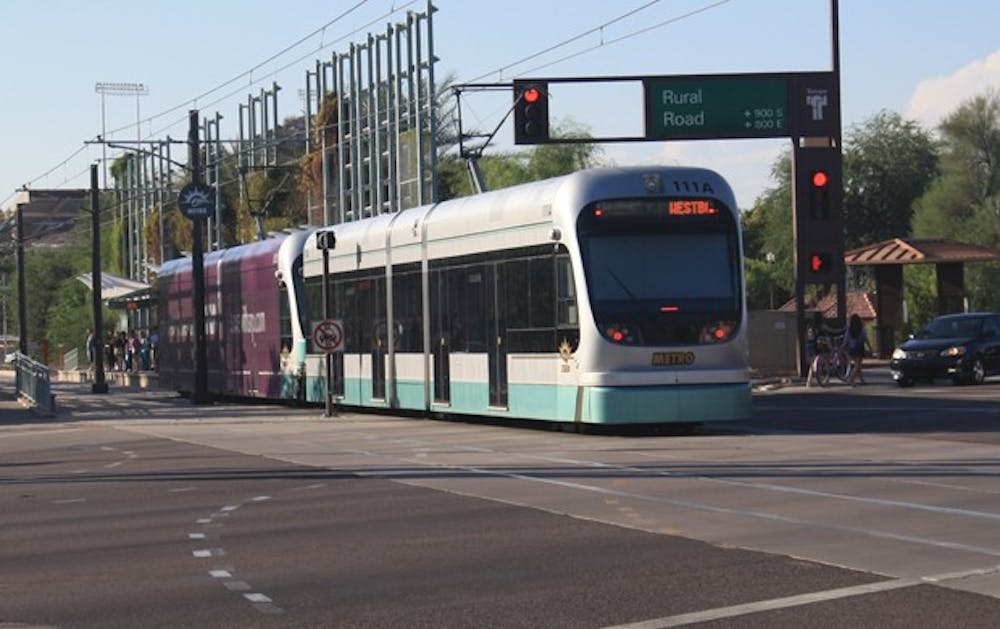
It’s midday and the sun is beating down on you, reassuring you that heat exhaustion will soon overcome your body. Signs of dehydration have already begun to wreak havoc on your energy supply as you race to the Metro Light rail station in the midst of the downtown Phoenix hustle and bustle. There seems to be no available resources in the urban community dominated by cement and infrastructure, and while you are racing on your bike, other less privileged inhabitants must endure the stress of the heat.
When you finally reach the platform, you ease yourself to the station and at the touch of a button you suddenly become the center of a cool arena of intoxicating refreshment. With the heaviness of the cityscape trying earnestly to weigh down your thoughts with heat-related issues, it’s as if this weight was lifted and you begin to feel a light and airy feel of satisfaction.
NRG Energy, along with other energy contractors, has sponsored a $300,000 project to incorporate solar-powered cooling at the Third Street/Washington lightrail station, which penetrated the system this past summer and brought that breeze to the rail.
Prompted by a need to promote the comfort levels of commuters through extreme heat during Major League Baseball All-Star activities, the project hopes to promote the overall experience of public transportation, which can be environmentally and socially influenced. The project also features an educational element that showcases how the system works.
While the downtown Phoenix area caters to working individuals who utilize the city during daytime hours, there are limited resources for those who call the area home and those who live in the surrounding low-income neighborhoods. The project idea considers those who use the facilities downtown for recreational purposes, but some say there’s still an issue with the heat and those who aren’t able to defend themselves against these conditions.
Christopher Boone, a professor at the School of Sustainability, says the project is a beneficial idea as public transportation systems help to improve environmental elements like air quality and public health. It even brings social benefits.
“Public transportation improves behavior and interaction,” Boone says. “You can see a cross section of humanity that can be troubling, but you can see the reality of who we are.”
Although there are social and environmental benefits to public transportation systems like the light rail, other aspects must be considered in order to analyze how a heavily funded project would affect the public as a whole.
“This isn’t the solution everywhere,” Boone says. “We need to look at transit needs of all people.”
The light rail system is enhanced by the cooling element, but there's a greater need than simply providing more comfort to passengers.
According to Boone, some neighborhoods of South Phoenix do not have basic elements provided, like benches or shade, at the transit stations, unlike other stations in more prominent communities.
“A tree could serve the same purpose and the benefits are derived from nature,” Boone says.
Along with the environmental concerns, there's concern about residents of the urban community of Phoenix. In these neighborhoods, which are populated predominantly by minorities of low income, few resources are available, and this is where the greatest intensity of heat exists.
Sharon Harlan, associate professor at the School of Human Evolution and Social Change, says she is most concerned about the social justice of urban communities and the issues that are associated with low-income, minority neighborhoods, as well as homeless people, who typically live downtown.
“How is the intervention going to help this population of people?” Harlan says with a look of worry.
This intervention is supposed to help the overall experience of commuters traveling in the summer heat, especially those traveling downtown, but there has been no considerations expressed about how the project will affect the low-income population living in this area.
Harlan agrees that the effort will most likely help to attract people to downtown and will economically benefit and influence the community.
“It’s hard to criticize the efforts,” Harlan says, referring to the solar-power project. “However, there are a lot of angles as to who is actually benefiting.”
Although the solar-powered cooling stations have not been developed for the Tempe campus, physics freshman Jimmy Phan says the development is a great idea for those commuting in the downtown area and does not feel as effected by the heat.
“I’ve lived here all my life so I got used to it,” Phan says as he waits at the station platform, while the sun beats down heavily on his sunburned skin.
While this commuter was able to thrive in the exhausting elements, business law junior Kayla Digby was making an effort to find refuge from the sun as she waited for the light rail and says the cooling stations would help.
“I haven’t adjusted to the heat yet,” she says reluctantly. “The cooling stations would benefit the experience overall, and I would consider going downtown because of the development.”
While students agreed that the cooling stations would promote their commuting experience, students did not express a concern about the urban environment and its effect on the people who populate the area. While some researchers are critically assessing the situation, there seems to be a lack of realization that continues to suppress the people of Phoenix.
“We are all connected here,” says Harlan about the people living in and outside Phoenix.
This project will help to demonstrate the need of urban communities, but there is more to be done in order to promote a greater livelihood for those living in this harsh environment that researchers at ASU are continuing to investigate.
“We aren’t digging deep enough,” said Harlan. “Sustainability isn’t just about projects, it’s about a vision.”
Reach the reporter at asjohn10@asu.edu




